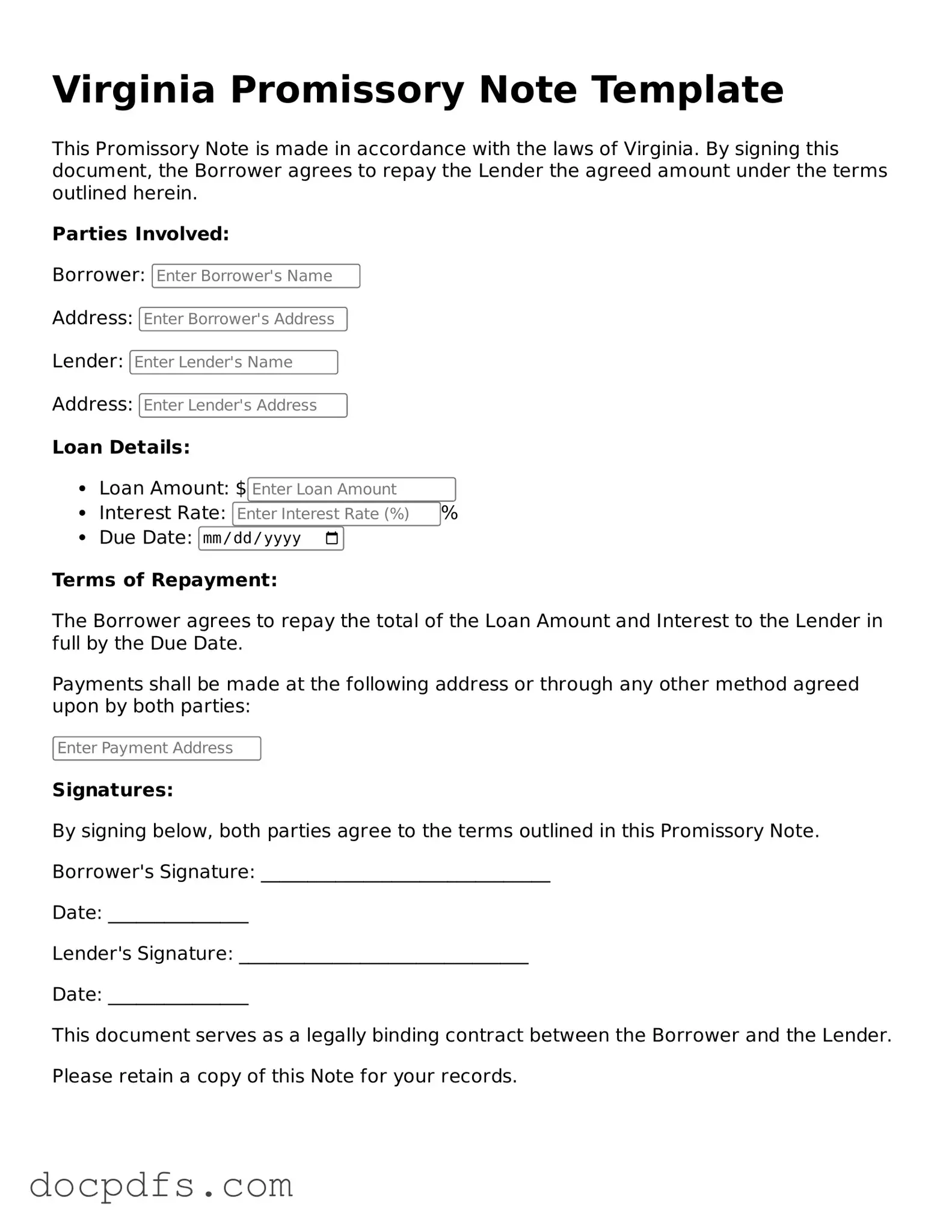Free Virginia Promissory Note Form
A Virginia Promissory Note is a legal document that outlines a borrower's promise to repay a specified amount of money to a lender under agreed-upon terms. This form serves as a crucial tool for establishing clear expectations between the parties involved, ensuring that both the lender and borrower understand their rights and obligations. By using this form, individuals can create a formal record of the loan agreement, which can help prevent misunderstandings in the future.
Open Promissory Note Editor Now
